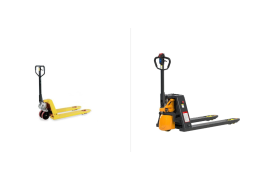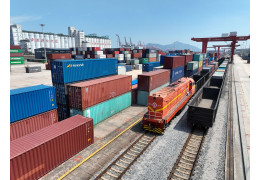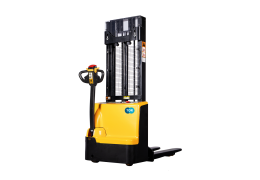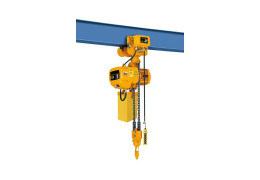How to choose Working Platform?
When choosing a work platform for your warehouse, facility, or other operational needs, it's essential to take a closer look at your job's specific requirements and consider the features and benefits of each model. Below, I'll guide you through key considerations and also highlight some of Parkoff’s products as practical examples to help you make an informed decision.
1. Power Source and Mobility Needs
If you require a flexible work platform that doesn't need constant access to a power supply, battery-operated telescopic platforms are a great option. For instance, Parkoff’s GTWY DC telescopic platform comes equipped with a battery that allows up to 40 lifting and lowering cycles on a full charge. This model is semi-electric, featuring an electric lift but manual travel. Its lightweight design makes it easily maneuverable and suitable for tasks where mobility is a priority, such as transporting goods in warehouses or performing service work on buildings.
Advantages to consider:
- Battery-Powered Flexibility: No need for a mains connection, enabling mobility.
- Compact and Lightweight: Perfect for narrow spaces or areas that need fast setup and relocation.
- Ease of Use: Equipped with dual control panels and an emergency button for safety.
Ideal Use Cases: Warehouses, schools, sports halls, trade fairs, hotels, and theaters.

2. Vertical Reach and Stability
If your work requires reaching greater heights while ensuring stability, the GTWY series from Parkoff provides options like the GTWY6-125 DC (6m working height) and GTWY9-100 DC (9m working height) with battery-powered telescopic capabilities. These platforms are equipped with side booms that have adjustable supports to maintain balance. Such stability features are essential when working at height, ensuring both safety and performance.
Advantages to consider:
- Adjustable Supports for Stability: Ensures balanced working conditions even on uneven surfaces.
- Emergency Lowering Button: Prioritizes safety in case of sudden power failure.
.jpg)
3. Load Capacity and Heavy-Duty Tasks
When choosing a work platform for heavier loads, it is important to match the platform's load capacity with the weight of tools, materials, and personnel you will be lifting. For example, the Electric Scissor Platform SJY05-12 supports a load of up to 500kg with a working height of 12m, making it ideal for heavy-duty warehouse operations or construction sites. Scissor lifts are also known for their vertical lift capacity and are designed for jobs requiring consistent elevation of heavy materials.
Advantages to consider:
- High Load Capacity: Supports heavier loads compared to other lift types, making it efficient for vertical lifting needs.
- Durability for Heavy-Duty Use: Suitable for frequent lifting tasks in manufacturing and construction environments.
- Ideal Use Cases: Warehouses needing to lift pallets, construction sites requiring high reach with stability, and maintenance tasks in large production halls.
4. Maneuverability and Compact Design
For smaller spaces or jobs that require ease of movement, models like the GTWY4-100 DC (4m working height) offer a compact and lightweight design. This model’s polyurethane wheels ensure it leaves no marks on the floor, making it ideal for indoor environments with sensitive flooring.
Advantages to consider:
- Compact Design for Confined Spaces: Perfect for navigating tight aisles or areas with limited floor space.
- No Floor Damage: Polyurethane wheels protect floors, making it suitable for retail stores, theaters, or clean warehouses.
5. Telescopic vs. Scissor Platforms
When deciding between telescopic and scissor platforms, consider your job requirements:
- Telescopic Platforms (e.g., GTWY12-200S DC with a 12m working height and 200kg capacity): Provide greater reach and flexibility for accessing difficult areas or reaching heights beyond vertical obstacles.
- Scissor Platforms (e.g., CFPT-0406MP): Offer a more vertical, stable lift with a higher load capacity, making them suitable for straightforward elevation without the need for lateral movement.
Key Considerations:
- Lateral Reach vs. Vertical Lift: Telescopic platforms are better for angled access and reach, while scissor platforms offer a stable lift with high capacity.
- Jobsite Restrictions: Choose based on your environment, whether indoor or outdoor, and ensure the platform's tires, power source, and features match your needs.
Conclusion
Selecting the right work platform comes down to assessing your operational needs, working height, mobility, and stability requirements. Whether you need compact maneuverability, heavy lifting, or versatile reach, Parkoff’s range of electric work platforms and telescopic or scissor lifts provides solutions tailored to a wide range of applications. By understanding the features and benefits of each platform type, you can choose the equipment that will optimize your workflow, ensure safety, and enhance efficiency for your specific tasks.


































